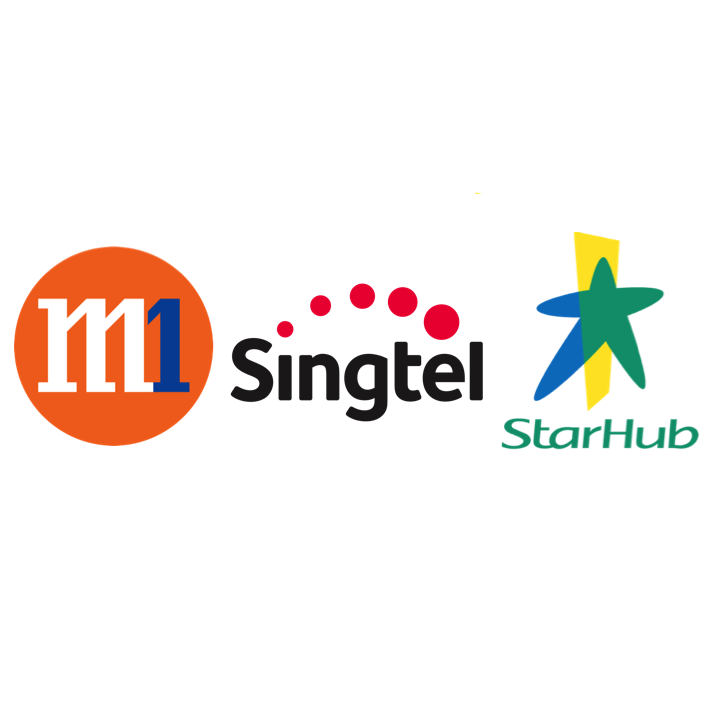 SINGTEL
Z74.SI
STARHUB LTD
CC3.SI
M1 LIMITED
B2F.SI
SINGTEL
Z74.SI
STARHUB LTD
CC3.SI
M1 LIMITED
B2F.SI
Singapore Telcos - Three’s a Crowd, Four is Worse
1. Three’s a crowd
1.1 Three potential bidders for 4th telco licence
- IDA has received three Expressions of Interest (EOI) from MyRepublic (MR), AirYotta, and TPG Telecom for the fourth telco licence. Expectedly, Consistel did not make an appearance, likely due to a recent misstep when it was fined by the IDA for providing misleading information and not getting regulatory approval before committing to a network asset sale.
- AirYotta is an unknown, linked to OMGTel & Consistel. Media reports that it is led by Michael DeNoma, OMGTel’s former CEO. Philip Heah, formerly OMGTel’s VP for networks and infrastructure and IDA’s senior director of next-gen infrastructure, is its CTO.
- TPG Telecom is known in Australia for its low-cost model. It is a broadband, IPTV and mobile service provider that emerged from obscurity just five years ago to become the second largest ISP and the largest MVNO in Australia through a series of acquisitions. It is known for its low-cost pricing model.
- MyRepublic needs no introduction. It is the upstart ISP and broadband network operator started in 2011 by former StarHub executive Malcolm Rodrigues and now has 55,000 broadband subscribers in Singapore.
1.2 Ball in IDA’s court; ruling in 3-4 weeks
- IDA will review their EOIs and decide who qualifies within the next 20 working days. It will assess their business plans, their technical capabilities, and whether they are “fit-and-proper persons”.
- If none of the three are approved, there will be no new entrant, and the reserved spectrum will be made available to the existing telcos.
- If only one applicant is approved, that party will obtain the reserved spectrum at the reserved price.
- If more than one applicant is approved, there will be an auction (the New Entrant Spectrum Auction or ENSA) between them to see who will get the reserved spectrum.
1.3 MyRepublic, TPG stand a better chance
- Of the three applicants, it would be fair to suggest that MR and TPG may stand a better chance of being qualified. MR is already competing in the Singapore broadband market, while TPG is an Australian public company with < AUD10b in market cap.
- Arguably, IDA should be more confident in these two established players relative to a newly set-up company.
2. Downgrade sector to Negative
2.1 Risk of new entrant spiked; TPG a concern
- With three companies now expressing interest, the probability of a new mobile entrant is now much higher than before, albeit not certain.
- Earlier, there was still the possibility of nobody bidding, given the talks of MR facing funding difficulties and Consistel’s run-in with the regulator. In addition, the appearance of TPG, a company well-known for its cut-price model in its home market Australia, has raised the risk profile further.
- Essentially, the appearance of three, not two or even zero potential bidders as was the possibility earlier, as well as the appearance of TPG Telecom, which is known in its home market as an upstart disruptor and challenger to the incumbents, drives our previously neutral view (albeit with a negative bias) to an outright negative view.
2.2 M1 cut to SELL, StarHub to HOLD; Singtel kept at HOLD
- We downgrade M1 from HOLD to SELL, and StarHub from BUY to HOLD, while Singtel remains a HOLD.
- As the two smaller operators, we see M1 and StarHub potentially losing more consumer market share to the new entrant. That said, StarHub should lose less market share due to its stronger multi-play hold on subscribers (e.g. consumer hubbing and improving corporate stickiness due to its enterprise strategy, where corporate users who are also its consumer customers are given larger incentives to stay on its network).
- Hence, our forecast reductions for StarHub are lower than M1’s.
- For Singtel, the Singapore mobile business accounts for only 12% of revenue, hence we see limited impact from the entrant of new consumer mobile rivals. While Bharti is facing a similar new entrant threat from Reliance Jio, our forecasts already conservatively assume a 10% discount to our Indian telecom analyst’s forecasts. As a result, Bharti is expected to fall from 13% of Singtel’s pretax profit in FY3/16 to
- Our DCF-based targets for M1 and StarHub are cut, as follows, as we introduce longer-term forecasts that assume long-term contractions in EBITDA for M1 and lower growth for StarHub, as well as a lower terminal growth of 2% for Singtel (from 2.5%).
- M1, from SGD2.94 to SGD2.04. The main changes are the assumption of a steady contraction in EBITDA from 2019 to 2023 following 3-6% cuts to FY17 and FY18 earnings. This follows changes to our forecasts for: (1) 5% reductions in ARPU vs our previous assumption of a 1% reduction; and (2) cut in net-add assumptions.
- StarHub, from SGD4.15 to SGD3.52. In addition to introducing longer-term DCF forecasts, we also reduced FY17-FY18 earnings by 1- 2% as we assumed more conservative net-adds and ARPU.
- Singtel, from SGD4.41 to SGD3.70. We reduced FY17-19 forecasts by < 1% each as we again took more conservative assumptions on mobile revenue growth, as well as a lower 2% terminal growth rate.
Gregory Yap
Maybank Kim Eng
|
http://www.maybank-ke.com.sg/
2016-09-05
Maybank Kim Eng
SGX Stock
Analyst Report
3.70
Down
4.410
3.52
Down
4.150
2.040
Down
2.940

